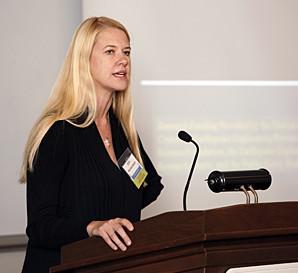Search & rescueLouisiana’s Cajun Navy shines light on growing value of boat rescuers
As we look at the devastating losses suffered by Louisiana communities from the recent flooding, one of the inspiring aspects to emerge from the disaster are the reports of the “Cajun Navy” – everyday residents in their boats checking on and rescuing family, friends, neighbors and even strangers in need. The efforts of the Cajun Navy, however, are not unusual. Indeed, one consolation of the disaster is the extent to which the informal responses by survivors bolster stressed and overburdened formal response systems. We must continue to learn the right lessons from disaster: that there is value of both planning and improvisation in disaster. That although citizens might sometimes make mistakes, they also enable the greatest of responses. That successful disaster response, in part, depends on a willingness of formal responders to acknowledge the capacities of our citizenry, be they mariners or farmers, welders or educators, or something else entirely.

Tricia Wachtendor // Source: udel.edu
As we look at the devastating losses suffered by Louisiana communities from the recent flooding, one of the inspiring aspects to emerge from the disaster are the reports of the “Cajun Navy” – everyday residents in their boats checking on and rescuing family, friends, neighbors and even strangers in need.
The efforts of the Cajun Navy, however, are not unusual. Indeed, one consolation of the disaster is the extent to which the informal responses by survivors bolster stressed and overburdened formal response systems.
This type of emergent activity has become an integral component of the disaster environment. Over a half-century of research by the Disaster Research Center at the University of Delaware and other disaster scientists shows how typical it is, in fact, for groups of people to engage in new tasks, work with people they’ve never worked before or both.
From Katrina to 9/11
Disasters, after all, by their very definition signify that some aspects of the more official emergency management system has been overwhelmed. This could be due to poor planning, but it also could be related to the size of the event or some unusual aspect that has taken us by surprise.
Communities in Louisiana know this well and need only recall the tremendous contribution of boat owners after Hurricane Katrina. The Coast Guard, one of the few federal agencies to receive considerable praise after that catastrophe, demonstrated remarkable skill in working with the ad hoc flotilla of boats contributing to rescue operations. But a few years before Katrina, we saw something similar occur in another part of the country to a very different type of disaster.
This year marks the 15th anniversary of the September 11th attacks. In 2001, as most people were concentrated on the fires at the Pentagon, the crash in Shanksville, Pennsylvania and the collapse of the Twin Towers, a remarkable and less noticed scene was unfolding along the New York Harbor waterfront.
Mariners from across the harbor spontaneously converged, some of their own accord and some in response to a Coast Guard call for all available boats, to provide assistance. Vessels of all sorts succeeded in moving hundreds of thousands of evacuees from around the southern reaches of the island, despite the fact that there was no plan in place for such a mass activity.
